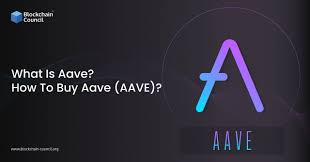AAVE, or African American Vernacular English, is a linguistic variety with aave deep historical and cultural roots. While often discussed in academic and social contexts, it is more than just a dialect of English; it is a vibrant linguistic expression tied to the experiences, history, and identity of African Americans.
Origins and Historical Context
AAVE has its origins in the early history of Black people in America. It emerged as a result of the complex interactions between African languages, the languages spoken by European colonizers, and the linguistic needs of enslaved Africans. These groups, often speaking different languages, developed a system of communication to facilitate trade, labor, and daily interaction. Over time, this system evolved into a distinct variety of English.
The development of AAVE can be seen as a response to the social and political realities of African Americans, especially in the context of slavery, segregation, and systemic discrimination. It is important to note that AAVE is not simply “broken English” or a series of random linguistic errors, but rather a fully developed and rule-governed language system.
Linguistic Features of AAVE
AAVE has many unique features that distinguish it from Standard American English (SAE). These features include phonological, grammatical, and syntactic patterns, as well as distinctive vocabulary. Here are a few examples:
- Phonology:
- AAVE often features vowel shifts and consonant simplifications. For example, the word “test” may be pronounced as “tes” or “stress” may be pronounced as “stress.”
- Consonant cluster reduction is common, where two adjacent consonants in a word are simplified. For instance, “cold” might be pronounced as “col.”
- Grammar:
- Use of the “be” verb: In AAVE, the verb “be” can be used in ways that differ from SAE. For example, “She be working” means that she is habitually working, as opposed to the SAE interpretation of this as an error.
- Zero copula: AAVE often omits the verb “to be” when it appears in certain contexts. For example, “She my sister” instead of “She is my sister.”
- Tense and Aspect:
- AAVE has distinctive ways of marking tense and aspect. For instance, “He been gone” indicates that the person has been gone for a long time, and “She be working” signals an ongoing or habitual action.
- Double negatives are frequently used for emphasis. For example, “I ain’t never been there” emphasizes the idea that the speaker has never been there.
- Vocabulary:
- Many words and expressions in AAVE are unique or used differently than in SAE. For example, “finna” is often used to mean “about to” or “going to,” as in “I’m finna eat.”
- Terms like “woke” have gained mainstream recognition, originally meaning to be aware of social injustices, particularly those affecting marginalized communities.
Cultural Significance
AAVE is not just a way of speaking; it is a powerful tool of cultural expression. African American culture has contributed immensely to the fabric of American society, and language is one of the most significant ways in which Black identity is articulated. From music genres like jazz, blues, and hip-hop, to the unique storytelling traditions, AAVE is woven into the cultural and social experiences of African Americans.
Hip-hop culture, in particular, has been a major force in bringing AAVE into mainstream consciousness. The lyrical style of artists such as Tupac Shakur, Jay-Z, and Kendrick Lamar has elevated AAVE, making it more visible and respected worldwide. Hip-hop has not only served as a platform for Black voices but also for the distinct dialect that carries with it a wealth of history, meaning, and cultural pride.
The Controversy Around AAVE
Despite its rich history and cultural significance, AAVE has often been marginalized and stigmatized. In many formal settings, such as schools, workplaces, and the media, speakers of AAVE have been penalized or ridiculed for using it. This is often part of a broader pattern of linguistic discrimination known as “linguistic prejudice,” where speakers of non-standard dialects are seen as less educated or less capable.
However, AAVE has also become a symbol of resistance. As African Americans continue to push back against stereotypes and racism, AAVE has become a means of asserting Black identity and heritage. It is a symbol of pride, resilience, and the ability to navigate the complexities of American society while maintaining cultural authenticity.
The Evolution of AAVE
Like all languages, AAVE is constantly evolving. It continues to absorb influences from popular culture, social movements, and other linguistic traditions. For instance, as the internet and social media have become more central to daily life, terms and expressions from AAVE are frequently adopted by non-Black communities, often without full understanding of their meaning or cultural context.
This phenomenon, known as cultural appropriation, can lead to tension, as elements of AAVE may be adopted in ways that strip them of their original meaning. While it is natural for language to evolve and for dialects to influence one another, it is essential to recognize the history and cultural significance of AAVE in order to respect and appreciate its origins.
Conclusion
AAVE is far more than just a dialect; it is a reflection of the African American experience, carrying with it centuries of history, culture, and resilience. It is a testament to the creativity and adaptability of language, as well as a living example of how communities use language to express identity, resist oppression, and shape the world around them. While it faces challenges of discrimination and misrepresentation, AAVE remains a cornerstone of African American culture and continues to shape American linguistic landscapes. Its influence can be seen in music, literature, and everyday life, and its importance should not be underestimated.

